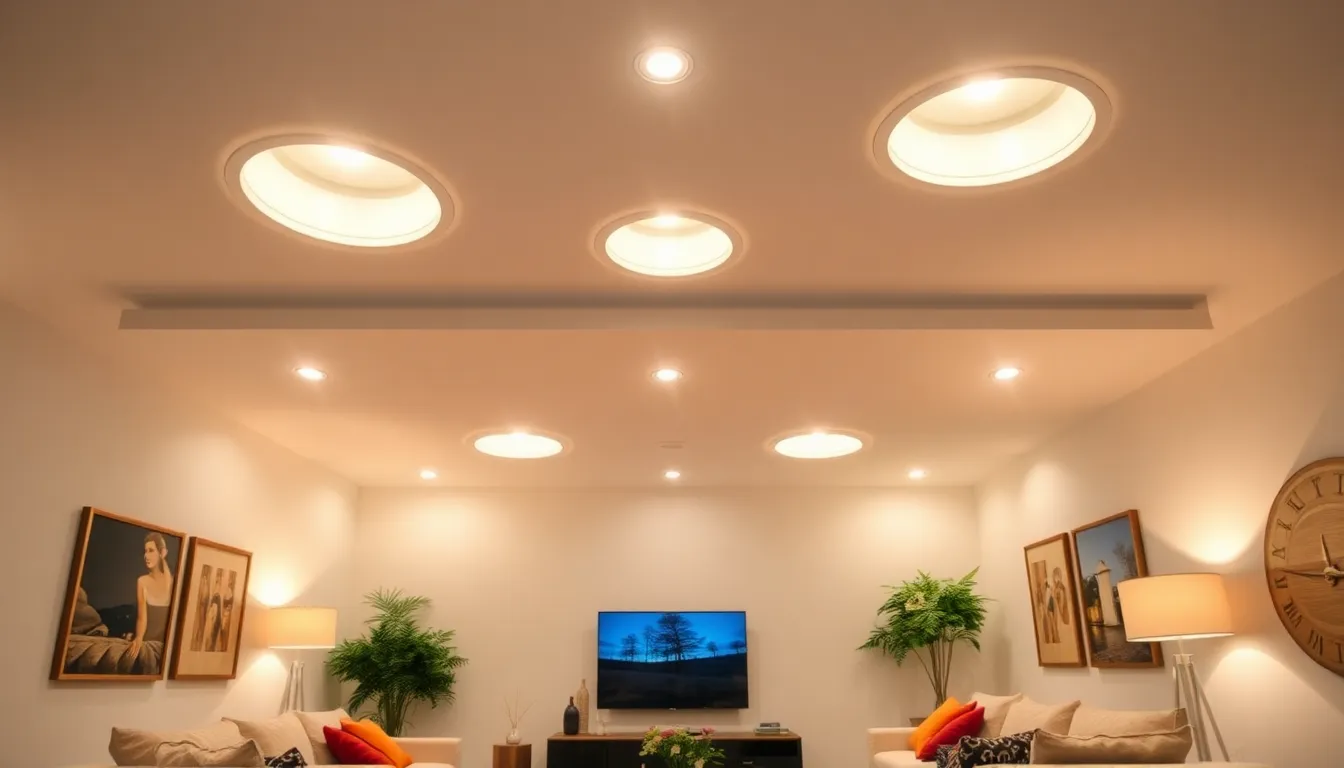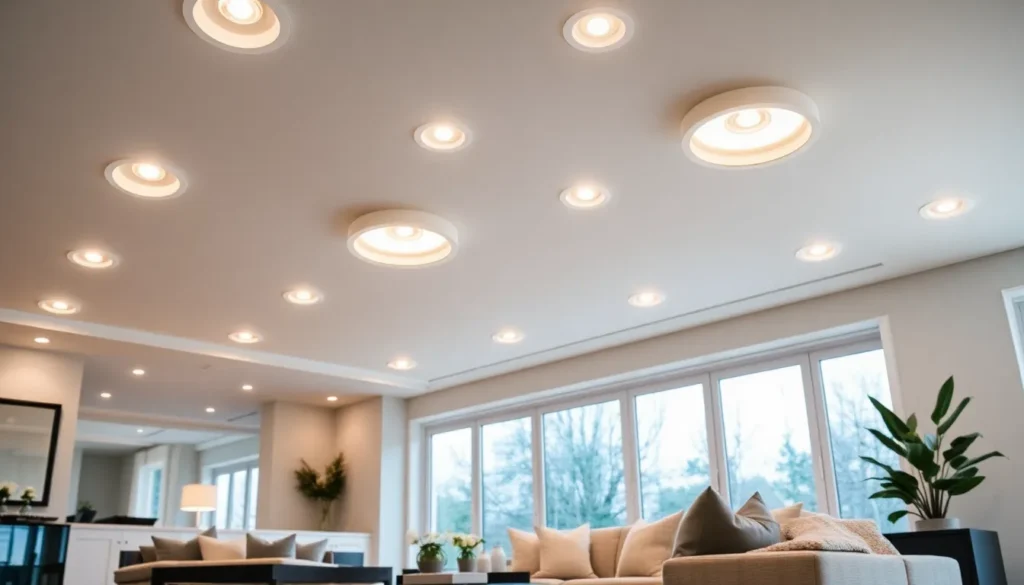Table of Contents
ToggleWhen it comes to giving your home that much-needed facelift, recessed lighting housing is an unsung hero in the world of interior design. Picture this: you’re scrolling through Instagram, admiring those stunning spaces with their sleek, modern lights, and you think, “I want that in my home.” But before you dive headfirst into the world of lighting fixtures, let’s shed some light (pun intended.) on what recessed lighting housing really is, why it matters, and why it’s often the hidden gem of home lighting designs. So grab a cup of coffee, sit tight, and prepare to illuminate your knowledge.
What Is Recessed Lighting Housing?

Recessed lighting housing serves as the home for the light fixtures themselves. Essentially, this is a shell that gets installed into your ceiling, housing the light bulb and, sometimes, the trim that reflects its design. It’s designed to sit flush with the ceiling surface, creating a clean, seamless look that can elevate any room’s design. You’ll often hear it referred to as a ‘can light’ or ‘downlight,’ named so because of its cylindrical shape resembling a soup can. With an array of options available, recessed lighting housing can accommodate various types of bulbs, including LED, halogen, and incandescent, giving homeowners the flexibility to tailor their lighting needs based on their specific goals.
Types of Recessed Lighting Housing
When choosing recessed lighting housing, one size does not fit all. There are several types designed for different applications.
New Construction Housing
This type is intended for homes that are either in the process of being built or getting a substantial remodel. It usually attaches to the ceiling joists, giving ample space and support for your lighting fixture.
Remodel Housing
If you’re looking to retrofit lights into an existing ceiling, remodel housing is the way to go. It includes features that enable it to clamp onto the ceiling without the need for extensive renovations. This is great for those who want to upgrade without starting from scratch.
IC Rated vs. Non-IC Rated
IC-rated housing bulbs can come in contact with insulation, preventing heat buildup that can create fire hazards. Non-IC rated options must be kept a certain distance away from insulating materials. Depending on the situation in your home, choosing the right type is crucial.
Choosing the Right Size and Shape
Selecting the right size and shape of recessed lighting housing can make all the difference in achieving the desired ambiance in a space. Typically, recessed fixtures come in various diameters, including 4, 5, and 6 inches.
Diameter Considerations
Choosing a diameter usually depends on the ceiling height. Wider fixtures tend to disperse light more effectively and can be particularly effective in spaces with higher ceilings. Alternatively, smaller fixtures work well in tight spaces or to create focused pools of light. Also, consider the aesthetics of the room. Avoid going for oversized fixtures in small rooms: subtler choices might lead to a more harmonious design.
Shape Matters
While round fixtures are the most common, square options have gained popularity for those looking to add a modern twist. Some spaces may even benefit from a mix of both shapes, creating interesting visual dynamics.
Installation Considerations
Installing recessed lighting housing is no small feat, so it helps to be knowledgeable about the main considerations.
Professional Installation vs. DIY
While some homeowners may feel adventurous enough to tackle the project themselves, hiring a professional can save time and significantly reduce the chances of a lighting mishap. If you decide to go the DIY route, make sure to familiarize yourself with electrical codes, especially if your home lacks an existing wiring system.
Ceiling Height and Joists
Before any installation, consider your ceiling height and the placement of ceiling joists. This key detail can affect how many fixtures you’ll need and how far apart they should be spaced. Ideally, fixtures should be placed approximately 6 to 8 feet apart to ensure even distribution of light.
Advantages of Using Recessed Lighting Housing
Why should homeowners consider recessed lighting housing? Well, the advantages are numerous.
Space-Saving Design
One significant benefit of recessed lighting is its space-saving nature. It effectively eliminates bulky light fixtures, working wonders in small spaces. This minimalist approach allows rooms to feel larger and more open.
Versatile Lighting
This lighting style often serves a dual purpose. It can offer general lighting for navigating through a room, while also providing task lighting for specific activities. Want to create a cozy reading nook? Simply position a few strategically placed recessed lights above your favorite chair.
Enhances Aesthetic Appeal
Recessed fixtures come in various styles and finishes, allowing homeowners to choose designs that suit their taste and overall decor. Also, they can help draw attention to architectural features, artworks, or specific decor pieces, acting like spotlights without compromising style.
Common Mistakes to Avoid
Even seasoned DIY enthusiasts can make blunders when it comes to recessed lighting housing. Here are a few missteps to sidestep:
Overlooking Lighting Needs
Before purchase, consider the specific needs of each room. Not every area requires the same lighting. For example, a kitchen might benefit from brighter, more focused lights, while a bedroom can thrive under softer, ambient lighting.
Ignoring Placement
Improper placement can be a bane to many homeowners. Ensure that fixtures are spaced correctly, generally 6 to 8 feet apart, to avoid dark spots or overly bright areas. Don’t place them directly above where people will be standing or seated.
Skimping on Quality
Consider investing in high-quality fixtures that are energy-efficient. While cheaper options may seem appealing, they often result in higher energy bills and replacement costs.
Maintenance and Care for Recessed Lighting
Like everything else in your home, recessed lighting housing requires regular maintenance to stay bright and efficient.
Regular Dusting
Dust buildup can hinder light output, so regular dusting of the fixtures and surrounding areas is essential. A damp cloth can do wonders in keeping them clean.
Bulb Replacement
When it’s time to replace bulbs, don’t simply pop a new one in without checking the housing. Ensure fixtures are in good condition and free from wear and tear.
Professional Inspections
Consider scheduling periodic inspections by professionals to ensure everything is functioning as it should. Catching any electrical issues early can save headaches down the road.




